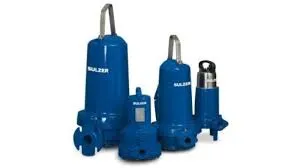Basque
- Afrikaans
- Albanian
- Amharic
- Arabic
- Armenian
- Azerbaijani
- Basque
- Belarusian
- Bengali
- Bosnian
- Bulgarian
- Catalan
- Cebuano
- Corsican
- Croatian
- Czech
- Danish
- Dutch
- English
- Esperanto
- Estonian
- Finnish
- French
- Frisian
- Galician
- Georgian
- German
- Greek
- Gujarati
- Haitian Creole
- hausa
- hawaiian
- Hebrew
- Hindi
- Miao
- Hungarian
- Icelandic
- igbo
- Indonesian
- irish
- Italian
- Japanese
- Javanese
- Kannada
- kazakh
- Khmer
- Rwandese
- Korean
- Kurdish
- Kyrgyz
- Lao
- Latin
- Latvian
- Lithuanian
- Luxembourgish
- Macedonian
- Malgashi
- Malay
- Malayalam
- Maltese
- Maori
- Marathi
- Mongolian
- Myanmar
- Nepali
- Norwegian
- Norwegian
- Occitan
- Pashto
- Persian
- Polish
- Portuguese
- Punjabi
- Romanian
- Russian
- Samoan
- Scottish Gaelic
- Serbian
- Sesotho
- Shona
- Sindhi
- Sinhala
- Slovak
- Slovenian
- Somali
- Spanish
- Sundanese
- Swahili
- Swedish
- Tagalog
- Tajik
- Tamil
- Tatar
- Telugu
- Thai
- Turkish
- Turkmen
- Ukrainian
- Urdu
- Uighur
- Uzbek
- Vietnamese
- Welsh
- Bantu
- Yiddish
- Yoruba
- Zulu
Telephone: +86 13120555503
Email: frank@cypump.com
Urr . 12, 2024 01:03 Back to list
Submersible Mixed Flow Pump Supply for Efficient Water Management Solutions
The Supply and Application of Submersible Mixed Flow Pumps
Submersible mixed flow pumps are vital in a variety of industrial applications where liquid movement is necessary. These pumps are designed to operate while submerged in the fluid they are pumping, which offers several advantages over traditional surface pumping methods. The mixed flow design allows these pumps to handle a wider range of conditions and deliver a consistent flow rate, making them an ideal choice for many industries, including agriculture, municipal water supply, and wastewater management.
Design and Functionality
A submersible mixed flow pump consists of an impeller, motor, and pump housing, all enclosed in a single unit that operates underwater. The impeller is crucial to its functionality, featuring blades designed to generate a mixed flow of liquid—combining both axial and radial flow characteristics. This design permits efficient movement of fluids while maintaining high pressure, making these pumps effective in various applications.
The submersible design of these pumps allows them to avoid the need for priming, which can be a significant advantage in systems where accessing the suction side is challenging. By being submerged, the pump eliminates issues with air entrapment and cavitation, which can affect performance and lifespan. Furthermore, submersible mixed flow pumps tend to be quieter than their surface counterparts, providing an additional benefit in noise-sensitive environments.
Applications
Submersible mixed flow pumps are widely used in multiple sectors
1. Municipal Water Supply These pumps are instrumental in extracting groundwater for municipal supply systems. They can be deployed in deep wells, where traditional pumps may struggle. Their ability to maintain a steady flow rate and operate efficiently at varying depths makes them suitable for these applications.
supply submersible mixed flow pump

2. Wastewater Management In wastewater treatment facilities, submersible mixed flow pumps are essential for moving effluent and raw sewage. They can handle solids and debris without clogging, which is vital in ensuring the efficiency of treatment processes.
3. Agricultural Irrigation Farmers rely on these pumps for irrigation systems, where they can move water from rivers, lakes, or aquifers to agricultural fields. Their high efficiency and adaptability to different flow rates help optimize water use in farming operations.
4. Industrial Applications Many industries utilize submersible mixed flow pumps for processes such as cooling, heating, and material transport. Their robustness and ability to handle various fluids make them a versatile choice across multiple industrial environments.
Advantages
The advantages of using submersible mixed flow pumps are numerous. The compact design allows for installation in tight spaces, and because they are submerged, there is less risk of water loss due to evaporation. Additionally, these pumps are generally easier to maintain, as the absence of external components reduces the wear and tear associated with mechanical seals and bearings exposed to air.
Energy efficiency is another significant advantage. These pumps are designed to operate optimally within their specific flow and pressure parameters, often resulting in lower energy consumption compared to other pumping methods. This not only reduces operational costs but also minimizes their environmental impact.
Conclusion
As demand for efficient, reliable, and sustainable pumping solutions continues to grow, submersible mixed flow pumps are increasingly becoming the go-to choice across various industries. Their unique design allows for superior flexibility, enabling them to handle an array of pumping challenges with ease. With applications spanning from municipal water supply to agriculture and industry, these pumps offer an effective solution for the myriad of fluid transport needs in our modern world. As technologies advance and the need for better resource management becomes ever more pressing, the evolution of submersible mixed flow pumps will likely play a critical role in shaping our approach to fluid management in the future.
-
Reliable Non-Clog Sewage Pumps with GPT-4-Turbo Tech
NewsAug.04,2025
-
High-Performance Air Pumps for Sand & Gravel | Efficient Transport
NewsAug.03,2025
-
ISG Series Vertical Pipeline Pump - Chi Yuan Pumps Co., LTD.|Energy Efficiency, Corrosion Resistance
NewsAug.03,2025
-
ISG Series Pipeline Pump - Chi Yuan Pumps | Energy Efficiency&Compact Design
NewsAug.03,2025
-
ISG Series Vertical Pipeline Pump - Chi Yuan Pumps Co., LTD.|High Efficiency, Low Noise, Durable
NewsAug.02,2025
-
ISG Series Vertical Pipeline Pump - Chi Yuan Pumps | High Efficiency, Low Noise
NewsAug.02,2025










